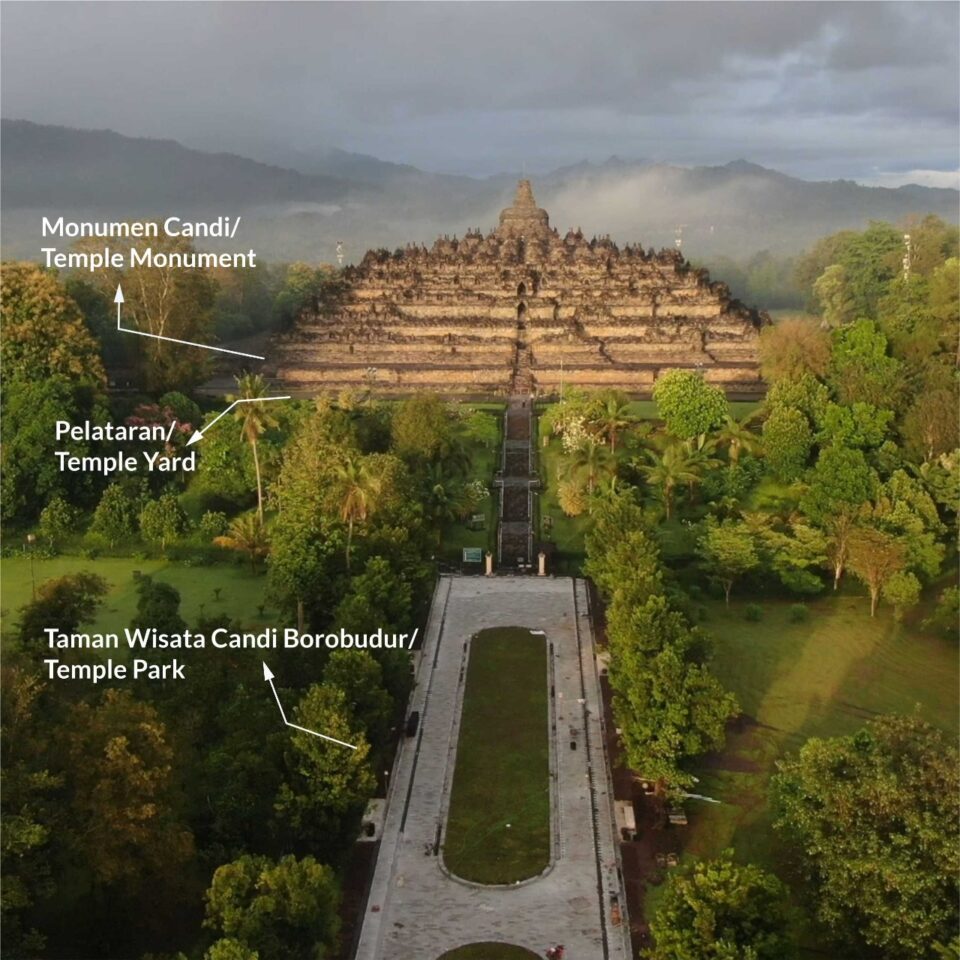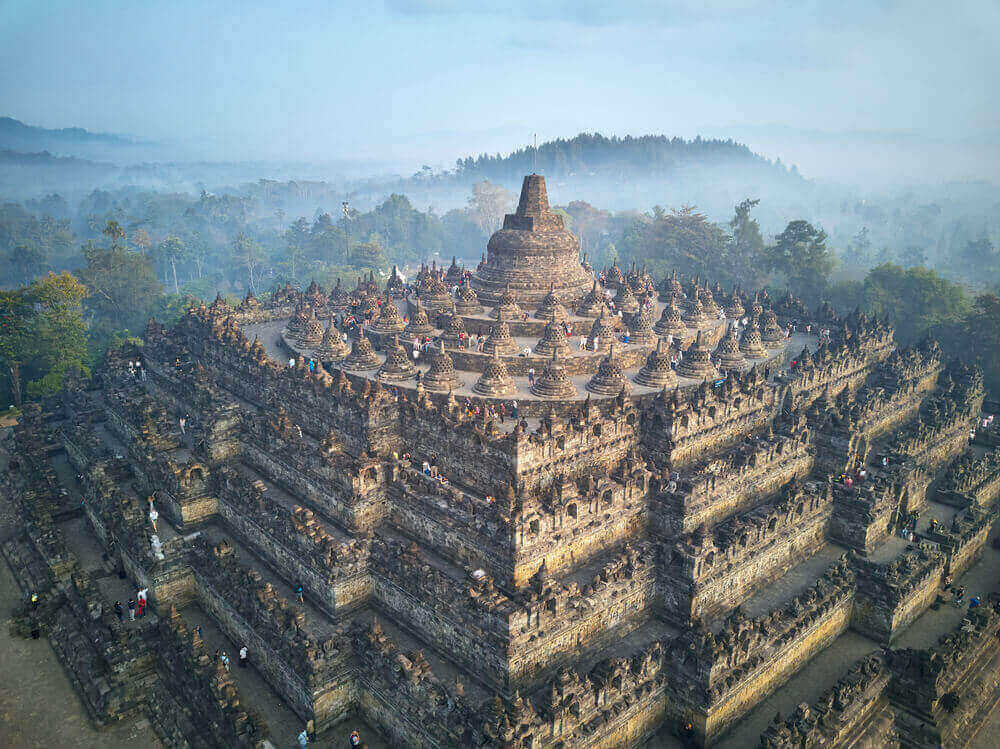Imagine a dawn breaking over an ancient monument, shrouded in a soft, ethereal mist, as the first golden rays of sun illuminate thousands of intricately carved volcanic stones. This isn’t just a dream; it’s the breathtaking reality of Borobudur temple during Ramadan, an experience that transcends mere sightseeing and delves into the very soul of Indonesia. This majestic Buddhist sanctuary, a UNESCO World Heritage site, stands as a testament to human ingenuity and spiritual devotion, offering a unique blend of historical grandeur and profound tranquility, especially during the holy month.
For travelers seeking a deeper connection, a pause from the everyday, and an immersion into vibrant culture, Borobudur is an undeniable magnet. But visiting during Ramadan unveils a quieter, more reflective side of this already awe-inspiring destination. Can you picture yourself standing amidst its towering stupas, with the distant call to prayer adding an almost mystical layer to the already spiritual atmosphere? It’s an opportunity to witness Javanese life with an added layer of introspection and respect, making your journey truly unforgettable.
Highlights: A Tapestry of Time and Tranquility
The atmosphere at Borobudur during Ramadan is subtly yet profoundly different. While the temple itself is Buddhist, the surrounding communities are predominantly Muslim. This means an enhanced sense of peace, particularly in the afternoons when many locals are observing their fast. The usual bustling energy of tourist hubs takes on a more subdued, respectful rhythm. Early mornings are still magical, but perhaps with fewer crowds than peak season, allowing for an even more personal encounter with the monument. You might hear the faint, melodious adhan (call to prayer) echoing across the Kedu Plain as the sun begins its ascent, a poignant reminder of the shared human quest for meaning.
Natural scenery here is nothing short of spectacular. Borobudur is nestled amidst lush green rice paddies, framed by the majestic silhouettes of Mount Merapi and Mount Merbabu volcanoes. The sunrise experience, a quintessential Borobudur ritual, takes on an almost sacred quality during this time. Watching the mist roll back to reveal the temple’s tiered structure, with its 504 Buddha statues and intricate bas-reliefs telling tales of Buddhist cosmology, is a moment that imprints itself on your memory forever. The interplay of light and shadow on the ancient stones, the scent of fresh earth after a morning shower, and the gentle breeze – it all conspires to create an intensely spiritual and picturesque scene.

Culturally, Borobudur is a living museum. Each of its nine platforms represents a stage on the path to enlightenment. As you ascend, tracing the path of circumambulation, you’re not just climbing stairs; you’re embarking on a symbolic journey. The detailed carvings depict stories from Buddhist scriptures, Javanese life, and mythical creatures, offering an unparalleled glimpse into ancient Indonesian artistry and philosophy. Engaging with local guides can truly unlock these narratives, transforming stone into vibrant storytelling. Furthermore, observing the respectful pace of local life during Ramadan, even for non-Muslim visitors, deepens your appreciation for the rich cultural tapestry of the region.
Activities: Beyond the Sunrise Spectacle
While the sunrise is undeniably a highlight, Borobudur offers so much more to explore. Dedicate ample time to wander through each level, examining the stunning bas-reliefs that stretch for kilometers. Take your time to find your favorite Buddha statue, perhaps peeking out from within a perforated stupa. The sheer scale and intricate detail demand slow, deliberate exploration.
Beyond the main temple, consider hiring a local becak (pedicab) or bicycle to explore the surrounding villages like Candirejo. During Ramadan, this can offer a unique insight into local life. You might witness families preparing for iftar (breaking fast) or see children playing quietly. Many villagers are incredibly welcoming, and a simple smile or greeting can open doors to fascinating cultural exchanges.
Don’t forget the two smaller, equally ancient temples nearby: Mendut and Pawon. These form a straight line with Borobudur, believed to be part of a single pilgrimage route. Mendut houses a magnificent large Buddha statue, while Pawon is a beautifully preserved, smaller temple often overlooked by hurried visitors. They offer a tranquil contrast to Borobudur’s grandeur. For a deeper dive into the temple’s history, the Borobudur Museum and Samudraraksa Museum (housing a replica of an ancient ship depicted in the temple’s reliefs) are well worth a visit.
Travel Tips: Navigating Your Borobudur Adventure
- Best Time to Visit: For sunrise, aim to arrive at the temple complex by 4:30 AM. During Ramadan, the cooler mornings are particularly pleasant. While tourist numbers might be slightly lower during the fasting hours, the evenings, leading up to and after iftar, can see local families out and about. Be mindful that during Eid al-Fitr (the end of Ramadan), the area can become extremely crowded with local holidaymakers.
- How to Get There: Borobudur is about an hour’s drive northwest of Yogyakarta, the cultural heart of Java. You can hire a private car with a driver, take a taxi, or use ride-sharing apps. Public transport options include TransJogja buses to Jombor Terminal, followed by a local bus to Borobudur. Many hotels in Yogyakarta also offer organized tours.
- Entrance Fees: As of my last update, foreign visitor entrance fees are typically around IDR 400,000-500,000 (around $25-35 USD) for adults, with discounts for students and children. This usually includes access to the temple complex. Check the official website for the most current prices and any changes to access rules, especially post-pandemic.
- Ramadan Considerations: Dress modestly out of respect for local customs (shoulders and knees covered for both men and women). While many local eateries catering to tourists will remain open, some smaller, local establishments might have reduced hours during the day. It’s thoughtful to avoid eating, drinking, or smoking openly in public during fasting hours. However, finding food and drink won’t be an issue in tourist areas.
- Nearby Attractions: Besides Mendut and Pawon, consider exploring the stunning Candirejo village for a glimpse into traditional Javanese life. For the adventurous, a jeep tour of Mount Merapi’s volcanic landscapes offers a dramatic contrast to Borobudur’s serenity.
Culinary Delights and Unique Souvenirs
No trip to Indonesia is complete without indulging in its incredible food. While in the Borobudur area, don’t miss out on local Javanese specialties. Try Gudeg, a sweet jackfruit stew, often served with rice, chicken, and egg. Sate Klathak, a unique lamb satay grilled on bicycle spokes, is a Yogyakarta specialty that’s worth the short trip back to the city. For a sweet treat, Bakpia Pathok, small, round pastries with various fillings (mung bean, chocolate, cheese), make perfect souvenirs. During Ramadan, look out for special takjil (snacks to break the fast) sold at local markets in the late afternoon – a delightful array of traditional sweets and refreshing drinks.
For souvenirs, the area around Borobudur is rich with opportunities. Look for intricate Batik fabrics, either in traditional patterns or modern designs. Small replicas of Borobudur stupas and Buddha statues are popular. Local artisans also create beautiful wooden carvings, traditional puppets (wayang golek), and exquisite silver jewelry. Don’t forget to sample some local coffee or tea – a perfect way to bring a taste of Java home with you.
Conclusion: A Spiritual Sojourn Awaits
Borobudur is more than just an ancient monument; it’s a profound experience. And experiencing Borobudur temple during Ramadan adds an extra layer of quiet contemplation and cultural immersion to an already magnificent journey. It’s a chance to witness the majestic sunrise, explore intricate ancient art, and connect with the gentle rhythms of Javanese life, all enveloped in an atmosphere of respect and serenity.
So, are you ready to embark on a journey that will not only awe your senses but also touch your soul? Borobudur awaits, promising an adventure unlike any other, a truly unique travel experience that will stay with you long after you’ve returned home. This ancient marvel, especially during this sacred time, offers a spiritual sojourn you simply won’t want to miss.


